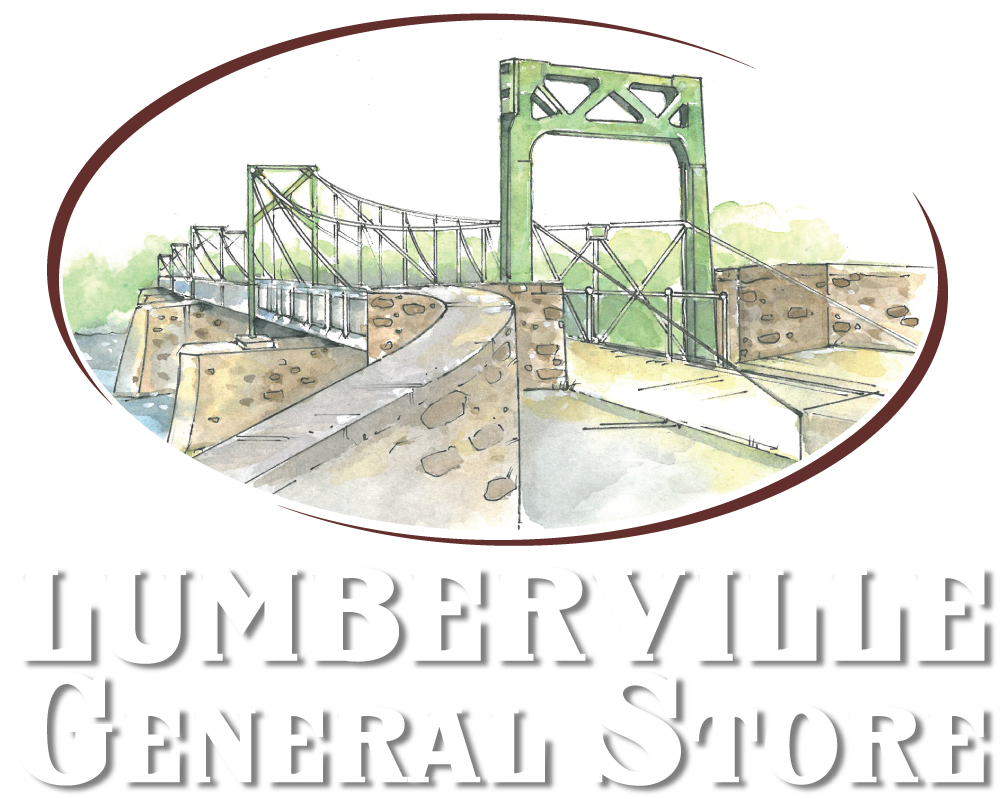
Give the Gift of the General Store
The holidays are just around the corner and holiday shopping can be challenging, but we have the perfect solution for your gift giving dilemmas. Black Bass Hotel/Lumberville General Store gift cards make wonderful gifts that never expire! Use them for a night out, dinner and drinks, or a simple delicious breakfast at the General Store.
Book Your Visit
Cool History
This once-sleepy area alongside the Delaware River steadily developed over the course of the late eighteenth century, and with it, the General Store. In 1775, Revolutionary War hero Colonel George Wall, Jr. acquired the land and oversaw the store. He also (modestly) renamed the area “Walls Landing” and created two lumber mills, a grist mill, and a surveying school. By 1825, the store served a dual purpose as the post office of the newly renamed “Lumberville” – a moniker chosen by Jonathan Heed and Samuel Hartley in response to the successful saw mill operations. In the early eighteenth century the store changed hands to the Heed family. Lumberville locals continue to receive their mail here.
Lumberville developed into a bucolic haven for artists, such as Martin Johnson Heade, who was originally a “Heed” before leaving for Europe to study painting. His romantic landscapes experienced a resurgence in popularity in the 1940s, with pieces now selling for up to $1,000,000. When the daughter of his nephew, Elsie Housely, became the owner of the General Store in 1939, she ensured Heade’s continued recognition after disassembling his sketchbook and selling the pages to eager collectors. The store remained in her capable hands until 1973.
The Lumberville General Store was run by Gerald Gordon through 2003. In 2008, Doylestown businessman Jack Thompson purchased the historic Black Bass Hotel at auction and shortly thereafter, he acquired the store. This marked the first time that the same person owned both of Lumberville’s most historic locations. After complete renovations to the Black Bass – and slight improvements to the General Store – both reopened in 2009.
In 2015, the General Store closed again in order to tackle structural renovations and enhancements. It reopened in the Spring of 2016 as a warm and inviting meeting place for locals, a convenient venue for hotel guests and tourists, and a rest stop for cyclists and hikers making their way along the towpath and local roads and trails.
The Lumberville-Raven Rock Bridge is a walking bridge that connects Lumberville to Bull’s Island, NJ. Originally built in 1856, the wooden covered bridge had four timber spans crossing the Delaware River. The bridge incurred damage from the flood of 1903 and by 1944, it had grown unsafe for vehicles and was condemned.
Today this unique pedestrian bridge serves as one of the most popular tourist attractions in the area.
Opened in 1832, the 60-mile canal spans from Easton to Bristol. It was built to carry anthracite, cement, limestone, and lumber from northeast Pennsylvania down to Philadelphia. The canal gave Lumberville access to hard coal to burn to produce the steam that drove the mills. It also had a low-cost means to move agricultural and manufactured wares to market.
Around the time of the American Civil War, the canal transported over 3,000 mule-drawn barges carrying more than one million tons of coal per year. Over time, traffic on the canal decreased as freighters started to prefer the railroads, and the canal was deeded to the Commonwealth of Pennsylvania in 1931.
In 1933 the Delaware Valley Protective Association (DVPA) was founded to protect the canal as a historical asset. In 1983 the Friends of the Delaware Canal was formed to ensure that the towpath and canal remain useable.
- Quaker poet and abolition advocate John Greenleaf Whittier called Lumberville home from 1839 to 1840.
- Culinary queen Julia Child married her husband Paul in Lumberville on September 1, 1946.
- Lumberville Historic District was placed on the National Register of Historic Places in 1984.
- The Black Bass Hotel was placed on the National Register of Historic Places in 2013.
- The Delaware Canal was listed on the National Register of Historic Places in 1974 and in 1978 was designated a National Historic Landmark.
- The Delaware and Lehigh Navigation Canal National Heritage Corridor (between Wilkes-Barre and Bristol) was established by the US Congress and signed into law by President Regan in 1988.
- In 1995, Scenic America – a conservation organization based out of Washington, DC – named the Delaware Scenic Drive (River Road) as one of America’s 10 Most Scenic Byways.




